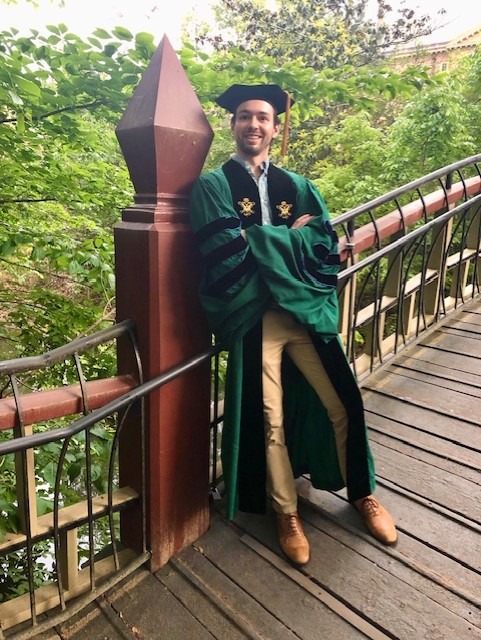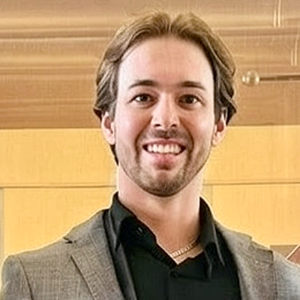ABOUT ME
Hi! My name is Noah Donald and I just graduated from The College of William & Mary in Williamsburg, VA with a Ph.D. in theoretical physics.
I am originally from Pittsburgh, Pennsylvania where I attended Mount Lebanon High School. During my high school career, I played for three years on the varsity soccer team and I was one of the captains my senior season. I also played club soccer for many years for Victory Express Soccer Club in Washington county. Academically, I focused on electives which were math and science focused. I also was awarded two scholarships from the Goethe Institute in Germany. The first one, in 2014, was a language and culture oriented trip for one month to Duderstadt, Germany where I took daily language courses and interacted with students from around the globe. I also got to see Germany win the world cup while I was there! The second one, in 2015, was a science and technology focused trip for two weeks in Germany. For this program, I was selected out of a national pool of applicants for a project I had completed where I engineered a water filtration device that had applications for third-world countries. This program took me to several institutions such as TU Berlin, DLR, and the Volkswagen Autostadt in Wolfsburg.
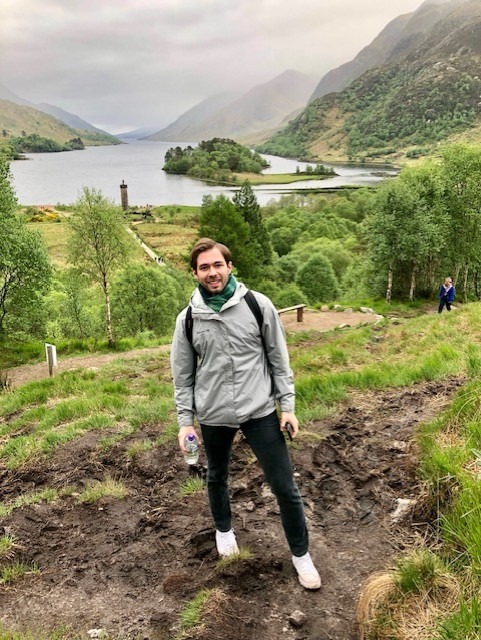
In 2016, I attended undergraduate at Ohio State University in Columbus, Ohio. During my four years in Columbus, I completed two separate Bachelor of Science degrees. One was for completion of the honors physics program and the other was for completion of the honors math program. I graduated Magna Cum Laude in the Spring of 2020. My research career began after I was awarded the DAAD RISE fellowship for the summer of 2018. This fellowship funded my time working for Prof. Michael Farle's research group at the University of Duisburg-Essen in Duisburg, Germany. Here, I worked on an ultra-high vacuum chamber to collect atomic level data regarding the surface structure and composition of various crystallin substrates. After returning from Germany, I worked for a year in Prof. Nandini Trivedi's condensed matter theory group and I received a departmental scholarship to fund my research over the summer in 2019. Here, I utilized C++, Python, and Mathematica to calculate the topological entanglement entropy of the Kitaev honeycomb model. I also studied phase transitions in quantum spin liquids using this model. Finally, I worked during my senior year in Prof. Sergei Chmutov's Knots and Graph Theory group where I worked on various combinatorial problems in Graph Theory and I gave a conference talk on voltage graphs at a conference in Marion, Ohio. In addition to academics, I regularly attended the German department's coffee hour to stay fresh on my language skills, played soccer each week, and, of course, I attended every OSU football game each fall.
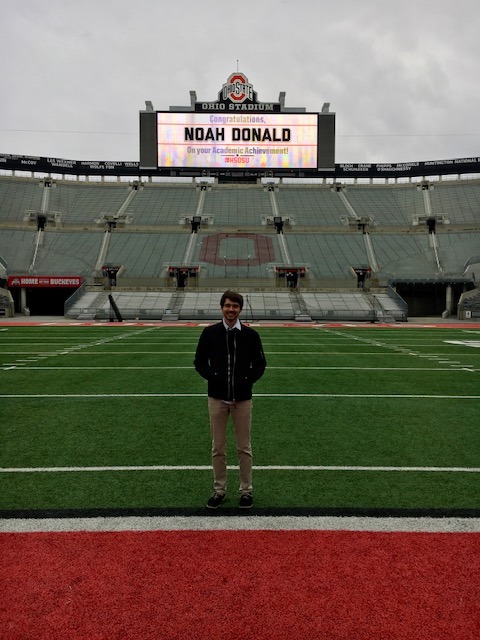
In 2020, I began my five-year graduate school career at William & Mary in Williamsburg, Virginia. During my first year, I focused on coursework and my duties as a teaching assistant (TA) for an undergraduate introductory physics lab course. In this role, I constructed short lectures to remind students of the core principles needed to complete the lab, oversaw the work of students, and graded weekly reports. I also served in this same role for my second year, but in more of a leadership position amongst the group of TAs.
In my second year, I began working on research in the high energy theory group with Prof. Chris Carone. In conjunction with fellow graduate student Dr. Mikkie Anderson and post-doctoral fellow Dr. Jens Boos, I worked on an asymptotically safe extension of the standard model of particle physics which gauged baryon number. In this role, I utilized C++, Python, and Mathematica to construct renormalization group equations for each of the couplings in the theory and evolved them numerically from the TeV-scale up to the Planck scale where gravitational corrections took effect. I also studied analytically the fixed-point structure of the theory and showed that the parameter space at the TeV-scale can lead to several different fixed-point scenarios at arbitrarily high energies while remaining consistent with experimental bounds. Additionally, by requiring the model to be asymptotically safe, we were able to restrict the space of possible values for experimentally underconstrained couplings, like kinetic mixing, and increase the predictivity of the model. After the results of this project were published, we built on the model by including a dark matter candidate. After verifying its stability, we showed through a numerical analysis that we can find a set of parameters in our model such that the correct dark matter relic density can be achieved while remaining consistent with experimental bounds on dark matter spin-independent cross section measurements. Furthermore, these parameters are such that an asymptotically safe model is still achieved. This follow-up paper was published in the Fall of 2022 and I gave a talk on this work at the 2023 PHENO conference hosted by the University of Pittsburgh.

During my third year, I got interested in mathematical approaches to gauge theories. After reading through several textbooks on modern differential geometry, I studied how the framework of principal fiber bundles can be applied to theoretical physics in the formulation of gauge theories. This spurred several written works during this time where I attempted to approach topics like electromagnetism, gravitation, and grand unified theories through this mathematical lens. I have other ideas too that I am interested in pursuing in this area that I one day hope to write about!
At this time, I also began working on a research project focused on particle propagation in regions of discrete spacetime which contain non-local defects. The mathematical framework we utilized is called Causal Set Theory and we built on previous work in this area to study the impact of various defect models on the Feynman propagator of free real scalar field in 2-dimensional spacetime. We found through numerical simulation of large data sets in Python and Mathematica that the propagator appeared multivalued with several distinct curves emerging when plotted against the magnitude of the spacetime interval between any two points. However, if one was working in a course-grained effective description of the theory, then one would only be sensitive to the average of these distinct curves. This average curve was found to resemble the usual Feynman propagator for a particle, but now it had a different mass and wavefunction renormalization! While this effect is a feature of interacting quantum field theories, here we saw it in a free theory containing non-local defects. This project was published in the spring of 2023.
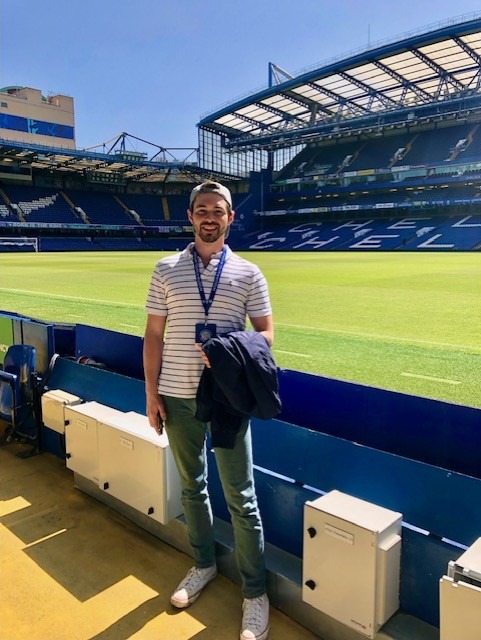
During my last year at William & Mary in 2025, I published my final paper and I immediately began work on putting together my dissertation to prepare for the defense. The final project was based on a tuning paradigm that results in a hierarchical separation of scales which was recently put forward by Howard Georgi. We applied it to a model with an extended scalar sector that was previously developed by my advisor which also contained a dark matter candidate. Through a numerical analysis, we showed that the observed dark matter relic density could be achieved and that the essential predictions of the model were consistent with experimental bounds while abiding by the tuning paradigm. The results of this paper were then published in the Spring of 2025.
In addition, I was also a TA again during my fifth year. In the Fall semester, I was a grader for a graduate level mathematical physics course and I also worked at the physics help desk for undergraduate students in introductory courses who needed additional assistance with homework. In the Spring semester, I was the grader for an undergraduate Astronomy course. In this role, I held weekly office hours and I graded student homework, midterms, and essays.
Over the past several years of research in the high energy theory group, I also worked on several other topics that did not lead to a publication but were very interesting and certainly worth mentioning. These topics include modular symmetries in supersymmetric extensions of the standard model to study flavor structure, quantum mechanics with minimal length scales, higher derivative quantum field theories, and the Trinification grand unified theory.
Over the summer of 2025, I a worked as an Adjunct Professor of Physics at William and Mary. I lectured for two hours each day on topics such as thermodynamics, statistical mechanics, electricity, magnetism, circuits, and optics for an introductory physics course. I also helped develop significant course infrastructure.
In the Fall of 2025, I was hired as a Computational Scientist in the Applied Mathematics and Physics (AMPS) group at Riverside Research and I am currently working from their office in lower Manhattan.
I also work remotely part-time as a theoretical physics consultant for the Knot Physics research group (https://knotphysics.net/index).
